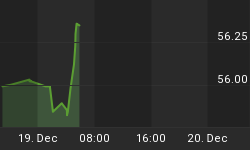2011 saw huge advances in solar, wind and other renewable energy sources, and these advancements will continue into 2012. In fact 2012 could be the year that renewable energy sources start to seriously compete with traditional fossil fuels, at least that is the hope in the battle to reduce carbon emissions and our dependence on dwindling oil stocks. However a major problem with renewable energy sources is that they can rarely provide consistent power levels, due to a myriad of factors outside of human control.
Eric Wesoff, an industry analyst with Greentech Media, explains that, "A wind farm only works when the blades are spinning. It might have a nameplate capacity of 100 megawatts, but it never puts out that much. Sometimes it's 70; sometimes it's nothing. To a grid operator, that kind of resource is a headache rather than an aspirin." To overcome these fluctuations energy storage systems can be used to store excess power at peak generating times and release it when needed to provide a more constant level. "So now that 100-MW wind farm can say, 'We're a 40-MW, steady-state, 24/7 energy source'-more like a coal plant. That's more valuable to society."
The most abundant energy storage system in use around the world is the battery, but producing giant batteries for the electrical grid has always been very expensive. Lots of research has been done into small batteries for mobile phones and MP3 players, etc. and now, according to Haresh Kamath, program manager for energy-storage research at the Electric Power Research Institute (EPRI). "The research applied to those industries is now being applied to batteries for the grid." In fact the world's largest battery array, a $500 million system capable of storing 36 megawatt-hours of electricity, has recently been completed in China by the State Grid Corporation of China (SGCC) and the electric car maker BYD. As part of China's push toward a smart grid system for renewable energy, the battery has been hooked up to 140 megawatts of solar and wind power generation as well as a smart grid transmission system. And we can expect more of these battery facilities after the Deputy Director of China's National Energy Administration called it the model for the future of Chinese renewable energy development.
As one of the first large battery systems for grid-level energy storage it will prove an intriguing test-bed for the rest of the world to watch and learn from. However we could also have a new, bigger example to study in a few years after Rubenius, the Dubai-based company, finalised plans to build an unprecedented energy-storage facility in Mexicali. Being positioned near the border it will help improve the reliability of both the US and Mexican grids, paving the way for more solar and wind power in both countries.
Giant Batteries for the grid have been seriously discussed for several years and are a very popular idea. In fact, Rubenius estimates that the grid battery market will be worth US $30 billion per year, "plus or minus $5 billion," says Jacob Rikard Nielsen, vice president of business development. "Of course, that's not going to materialize tomorrow. But as the technology matures and utilities gain experience, we'll get to that market status in the next 10 years. I'm quite optimistic."
It will be interesting to see how the new battery arrays in China and Mexicali fair. If both prove to be a resounding success it really could change the face of renewable energies the world over. Not to mention the huge market that it could create in the development and construction of the facilities.
By. James Burgess of Oilprice.com
















